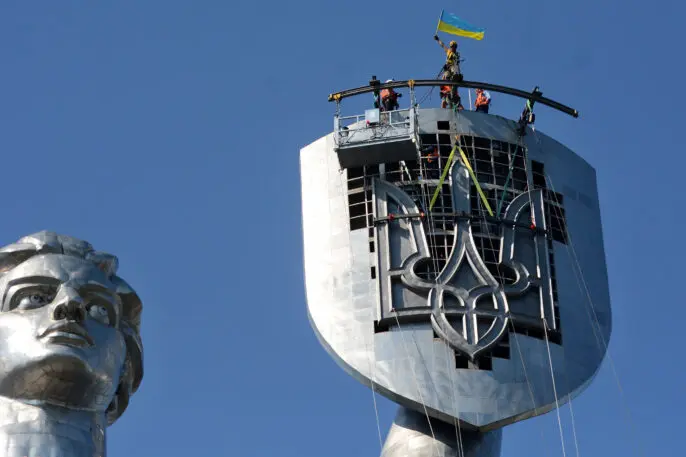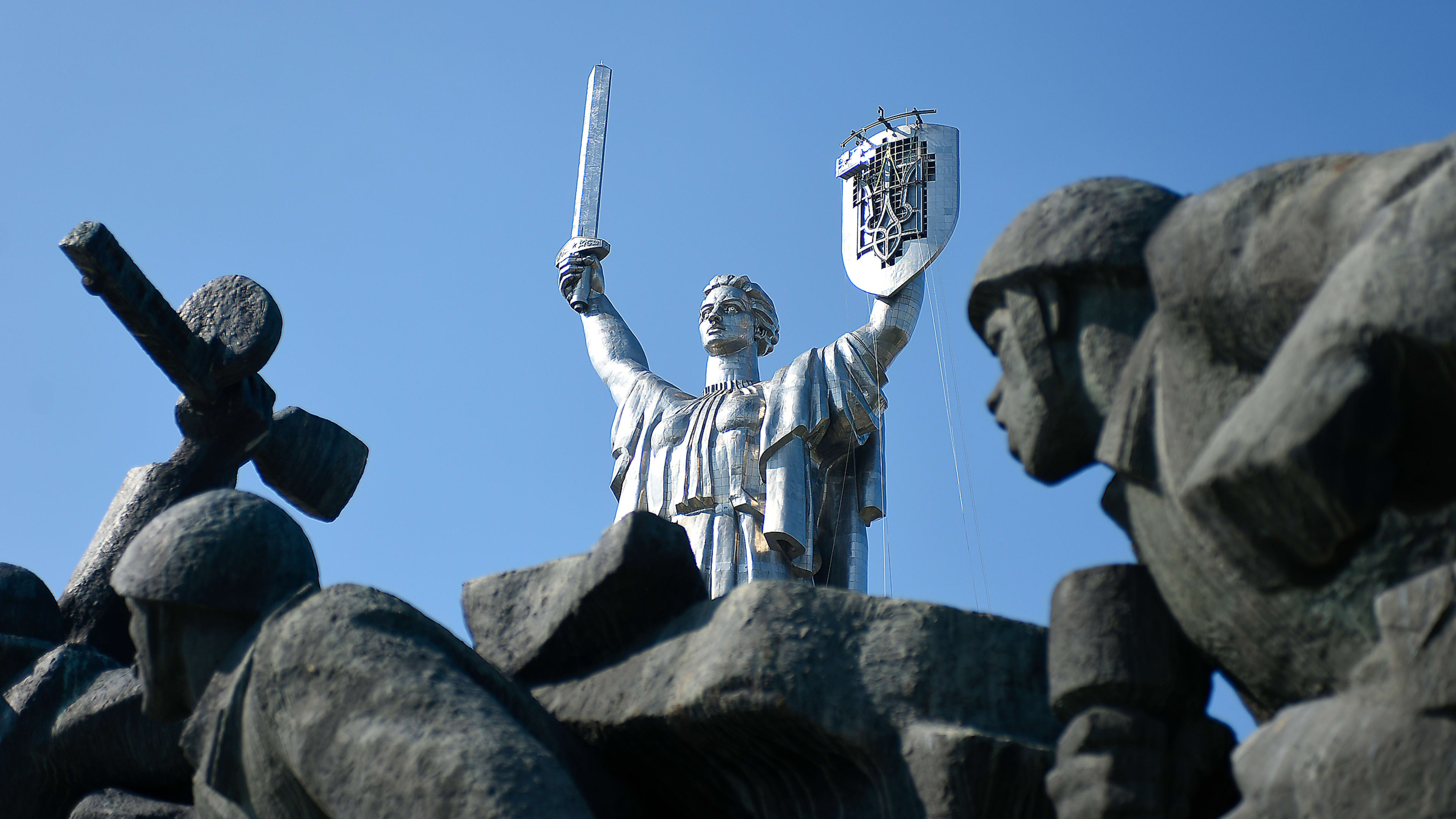As Russia’s war on Ukraine rages on, design has become a weapon of choice for many Ukrainians off the battlefield.
We’ve covered how a landscaper turned impromptu product designer is repurposing spent Javelin missiles into high-end speakers to bring ambulances to the front line. We’ve covered how the country’s ubiquitous Artemsil salt has been redesigned to fund the military’s drone program.
But Ukraine’s latest design project, though strictly symbolic in nature, is its biggest yet: Towering 335 feet above Kyiv, the Motherland Monument, also known as Mother Ukraine, is a massive, all-encompassing “screw you” to Russian President Vladimir Putin.

To understand why, let’s go back in time to the 1950s—an era greatly fetishized by Putin. Josef Stalin, the recently dead Soviet premier, had already been embalmed and put on public display. But what better way to pay homage to his legacy and the end of World War II than with statues. Lots and lots of statues. Per a 2011 Kyiv Post article, a pair of 650-foot monuments of Stalin and Lenin were once destined for the Dnipro River hills of Kyiv, but the plan eventually gave way to the Motherland Monument, a hulking 617-ton stainless steel victory memorial that debuted in 1981 atop a corresponding museum.
The only problem: the massive communist hammer and sickle on her shield, and the fact that Ukraine would eventually gain independence on August 24, 1991, following the collapse of the Soviet Union. In 2018, the director of Ukraine’s Institute of National Remembrance suggested removing the emblem, and last week, Russia’s war convinced officials to finally do just that.
Crews dismantled the hammer and sickle and replaced it with the Ukrainian coat of arms. The tryzub, or trident, was installed on August 6. The mark, designed by painter and architect Vasyl Krychevsky (and with roots in the 10th century), had become a Ukrainian symbol of national identity in 1918, and returned in 1992 after the country regained its autonomy.

As workers lifted the tryzub into place in anticipation of Ukraine’s independence day later this month, not everyone in the country was happy. Last week the Kyiv Post reported that the Mother Ukraine redesign will cost around $758,000 in wartime dollars, setting off criticism that resulted in the resignation of the country’s culture minister, Oleksandr Tkachenko. But per the Post, officials say corporate donations—not state dollars—will fund it.
What is certain is that the tryzub shield is a veritable middle finger pointing directly at the Kremlin. In his obsessive quest to return Russia to its Cold War glory days, a Soviet-era icon—one denoting victory, no less—has been weaponized against him in a capital city he failed to capture at the outset of his army’s invasion.
Back in Ukraine, though, it’s newly framed as a rallying cry for victory, and a stark reminder that battles are fought not just with Javelins, but with culture. In this case, 335 feet and 617 symbolic tons of it.
Recognize your brand’s excellence by applying to this year’s Brands That Matter Awards before the final deadline, June 7.
Sign up for Brands That Matter notifications here.
